There are tons of different fish you can keep in an aquarium. However, loaches have secured a special place in the hearts of aquarium enthusiasts due to their exciting appearances and interesting behaviors. There are many types of loaches out there for you to choose from.
They’re known for their playful antics, curious behaviors, and wide range of colors. They’re a popular choice for beginner and experienced aquarists. For instance, they burrow, explore, and interact a lot with their environments, making them more entertaining than other species.
While “loach” is commonly used, it encompasses a diverse array of species, each with its own requirements and behaviors. It’s important to know exactly what species you’re purchasing so that you can care for it properly.
In this guide, we’ll look at the different types of loaches and how to care for them.
What are Loaches?
Loaches are a diverse group of freshwater fish belonging to the family Cobitidae. They exhibit a range of body shapes, sizes, and colors, making them a captivating addition to any aquarium.
These loaches come from all over the world. However, they are united by their bottom-dwelling nature. They bring activity to the bottom portion of your tank. Typically, they also have an elongated body with sticking colors. Their unique mouth allows them to look for food at the bottom of the tank, where they forage for small organisms and particles.
In the wild, these fish would be found in slow-moving or stagnant waters. They are often situated around mud or sand, where they can burrow and excavate small tunnels. Some species are known for schooling behaviors, while others are solitary.
They’re also known for their playful, inquisitive behaviors. They tend to be more active than other fish, exploring every nook and cranny they can find. They’re one of the more entertaining fish to keep for this reason.
Types of Loaches
Loaches come in a variety of species, each with its own unique characteristics and requirements. In this section, we’ll explore some of the most popular types of loaches that are commonly kept in aquariums:
1. Clown Loaches (Chromobotia macracanthus)
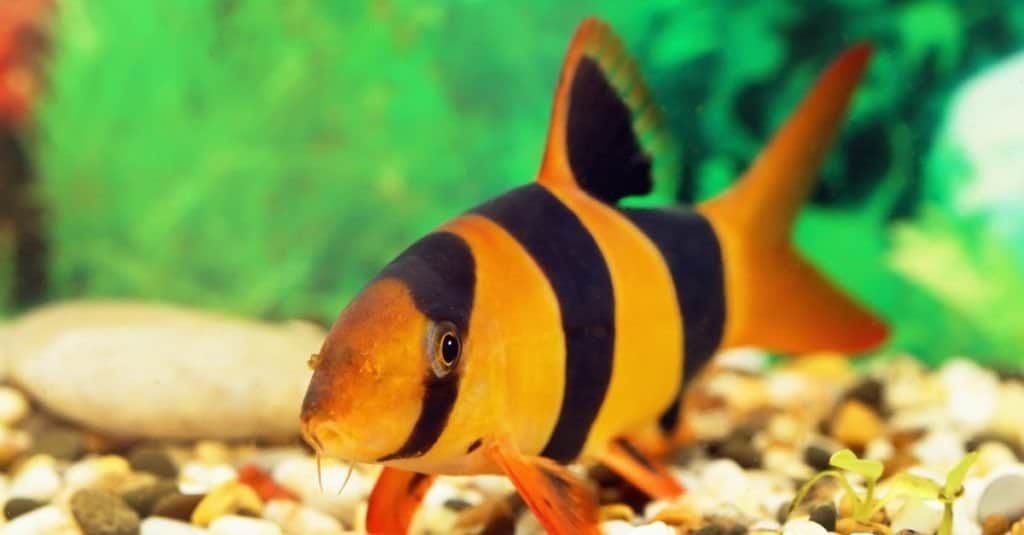
These loaches live fairly long and are easy to care for.
©Grigorii Pisotsckii/Shutterstock.com
Clown loaches are known for their vibrant, distinctive coloration and barrel structures around their mouths. They’re usually golden with thick black bands across their body. As they grow, they tend to intensify in color.
These fish come from Indonesia, where they tend to live in slow-moving rivers and streams with lush vegetation. They prefer warmer water temperatures.
These loaches are known for their active and playful nature, making them a delight to observe. They are social fish that prefer the company of their own kind, so they typically have to be kept in groups. However, they can coexist peacefully with other community fish.
2. Kuhli Loaches (Pangio kuhlii)
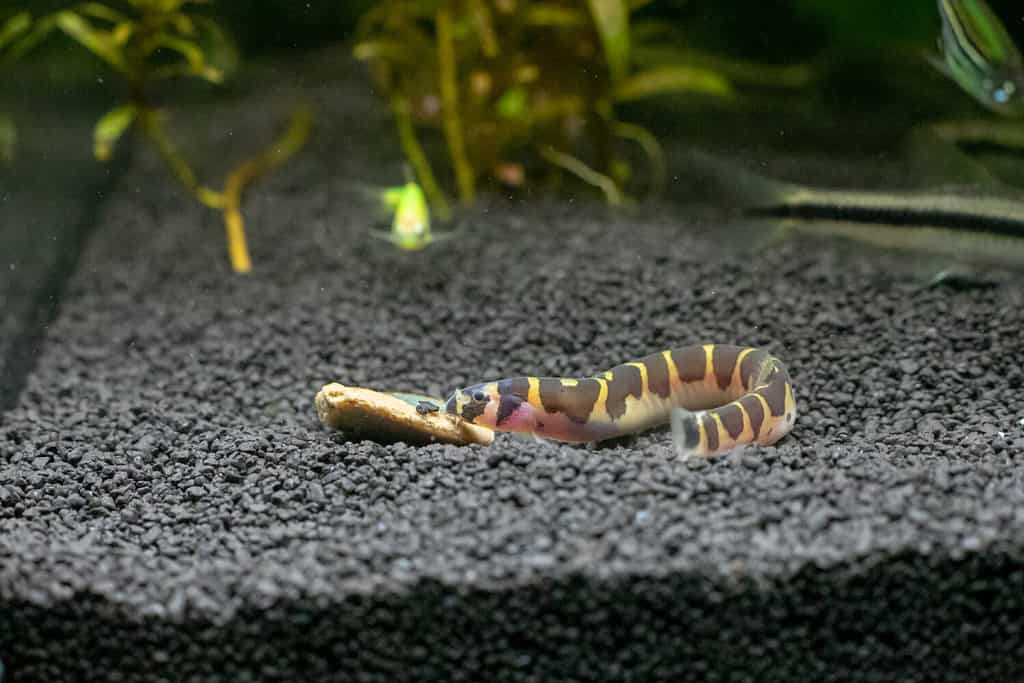
These loaches are extremely long and often mistaken for eels.
©Olga Chezhina/Shutterstock.com
Kuhli Loaches are often described as having eel-like bodies with distinctive spotting. These markings are often described as “zig-zag,” though they vary greatly.
These fish are mostly nocturnal and prefer to burrow a lot. They enjoy hiding in crevices and under decorations during the day to stay hidden. Due to their shy nature, it’s best if they are kept in groups of their own kind. They thrive in tanks with plenty of spots and soft substrate.
3. Yoyo Loaches (Botia almorhae)
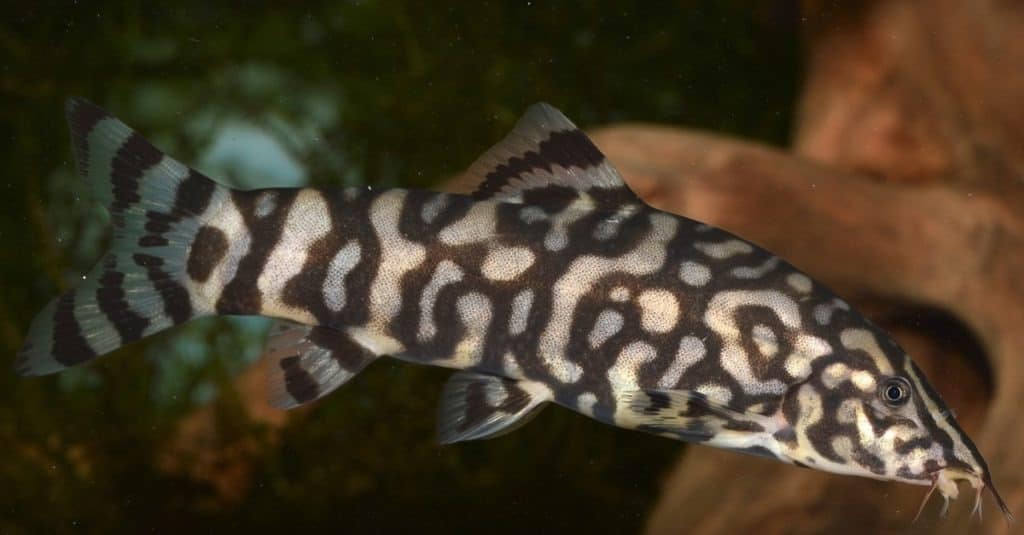
While not as exciting as other loaches, these fish are great for community tanks.
©Guillermo Guerao Serra/Shutterstock.com
YoYo loaches are named after the Y-shaped pattern on their bodies, resembling the letter “Y” or the profile of a yo-yo. Their exact coloration varies widely, though. They often have a series of intricate markings.
These fish have serious schooling tendencies and social behavior. Keeping these in groups of three is recommended, as they are naturally group fish.
They also require well-maintained aquariums with great water quality. They also enjoy plenty of hiding spots, so be sure to provide plenty of driftwood and rock formations to create an environment that mimics their natural habitat.
4. Skunk Loaches (Yasuhikotakia morleti)
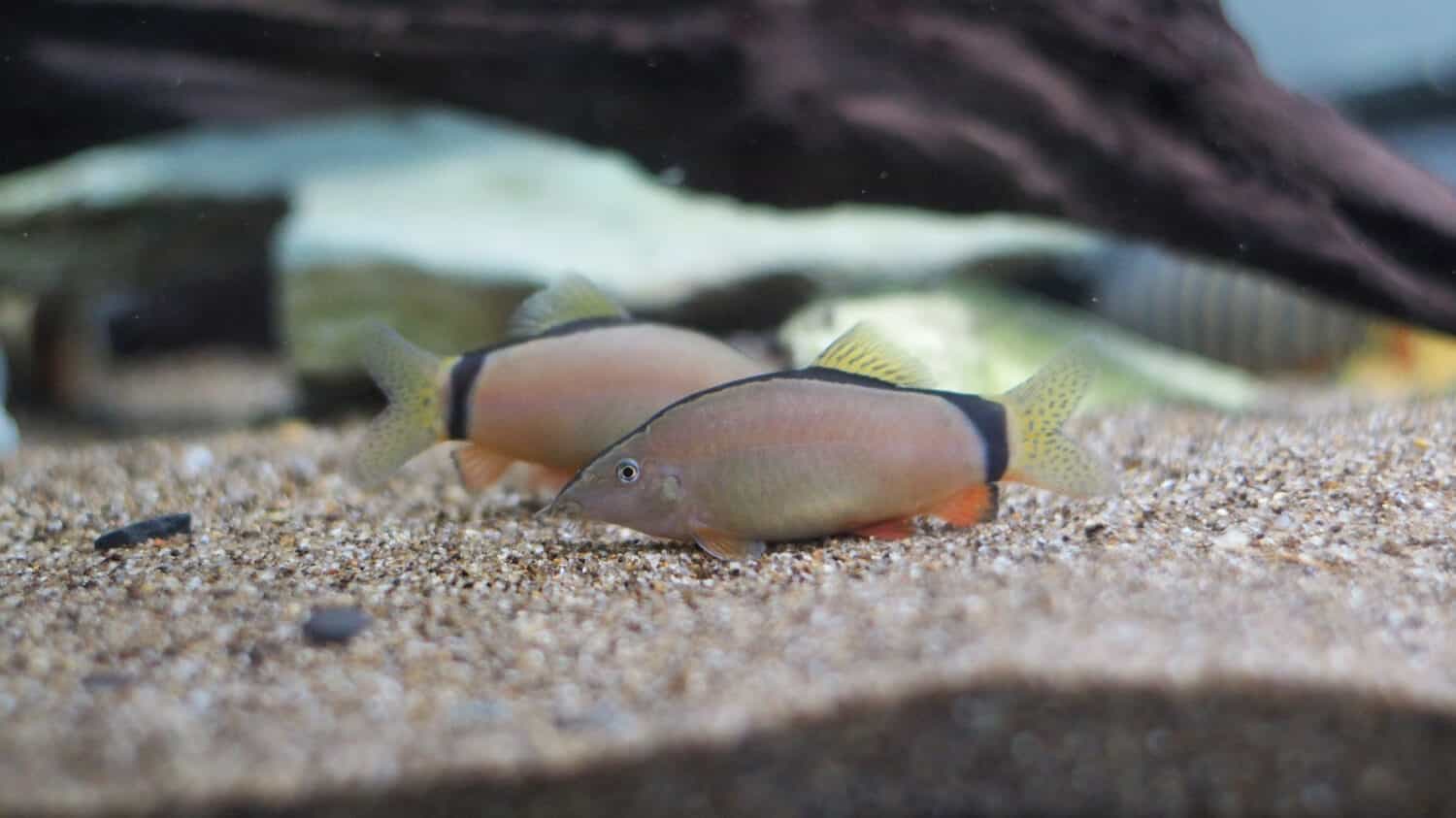
Skunk loaches are unusual-looking fish that are entertaining to have in a tank.
©GrainScrubb/Shutterstock.com
These loaches look a bit like skunks, hence their name. They have a black stripe that runs down their back. They also have a yellowish-brown body, though their coloration varies slightly.
These fish are a bit harder to find, as they are hard to breed in captivity. They have very specific breeding conditions to induce spawning. Skunk loaches are omnivores and eat just about everything. They will readily consume different types of food, including frozen options, high-quality pellets, and flakes.
Selecting the Right Loach
So, what loach is right for you? Different loaches have varying size needs due to their sizes and behaviors. For instance, clown loaches are pretty large, so they require larger tanks with plenty of swimming space. On the other hand, Kuhli loaches have a more moderately-sized tank.
The tank should also reflect the natural environment of the specific species you choose. Most of the time, these loaches prefer a suitable substrate for burrowing, plenty of hiding spots, and lots of decor. However, it does vary a bit.
You also need to consider whether or not you have other fish or want to keep other fish. While loaches are usually peaceful, they may not get along with more aggressive fish. Different species do have slightly different behaviors, though, so it’s important to select tankmates that get along with your particular species.
Of course, your personal preferences also matter. Consider what aspects of loaches appeal to you and which ones you find the most aesthetically pleasing. Consider the region the fish are from, too.
Breeding Loaches
Breeding loaches in captivity can be very rewarding. However, the specific breeding behavior varies by the exact type of loach. There are some insights you need to keep in mind:
- Conditioning: Properly conditioning the breeder pair (or group) is required to prepare them for spawning. You’ll often need to feed a diverse diet rich in proteins.
- Stimulating Breeding: Replicating natural environmental cues can help trigger breeding behaviors. Adjusting water temperature, lighting, and water changes can mimic seasonal changes and encourage spawning.
There is a lot of species-specific information you’ll need to consider, though. Different loach species have different breeding behaviors and challenges. Clown Loaches are known to prefer nesting in crevices and might display courtship behaviors such as chasing and fin displays.
On the other hand, Kuhil loaches are secretive and require specialized setups to encourage breeding. They are often one of the more challenging fish to breed.
You’ll need to ensure that the tank is set up correctly, the water parameters are correct, the water quality is top-notch, and the fish’s diet is proper.
Once your fish are successfully bred, you’ll need to consider how you’ll raise the fry. You must separate the fry from the adult fish to reduce predation risk. The adult fish will often eat the fry.
Fry are much smaller than adults, so they must be fed the proper food. Newly hatched fry are often fed micro worms or brine shrimp. Be sure to maintain the proper water conditions, as smaller fish are more susceptible to poor water conditions. As the fry grows, you’ll need to increase the tank size and offer a proper amount of hiding spots.
Caring for Your Loaches
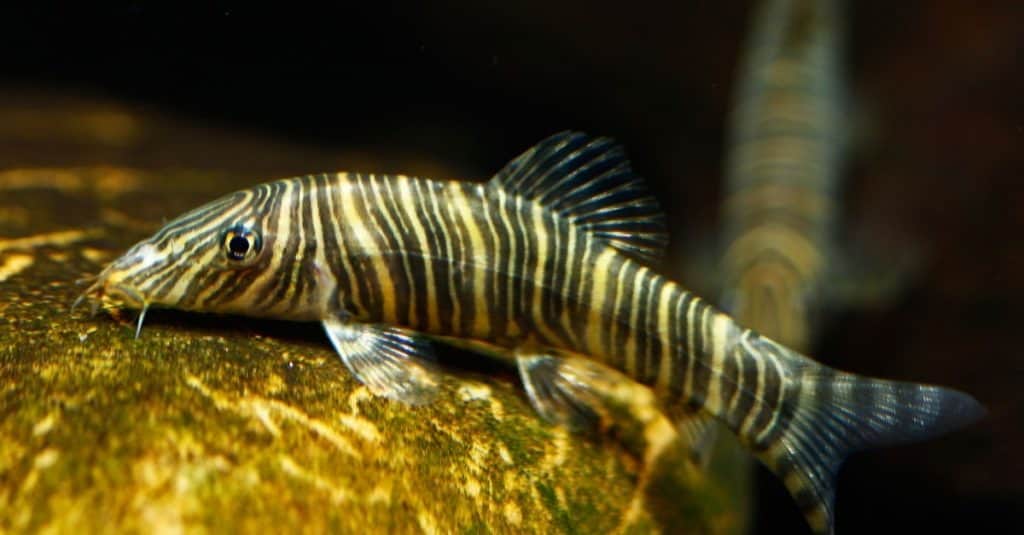
All loach species have different needs, so it’s important to research each specific species.
©Pavaphon Supanantananont/Shutterstock.com
Caring for loaches isn’t challenging, but it does require some considerations. You need to maintain the proper water conditions, which are crucial for the health of your loaches. Regularly test the water parameters, including temperature, pH, ammonia, nitrite, and nitrate levels. Different loach species have varying temperature preferences based on their natural habitats, so ensure that your tank’s temperature matches the requirements of the species you’re keeping.
Regular water changes are also important to help remove accumulated toxins and maintain proper water conditions. Invest in a proper filtration system that can help keep the tank properly clean.
Diet is very important. Loaches have very different dietary needs depending on their species. Many types of loach require quality pellets, flakes, and frozen foods. Some may prefer live foods. Consider replicating their natural foraging behavior by scattering food across the tank floor, which allows them to forage.
Only offer small portions to prevent overfeeding and water quality issues. Adjust the amount based on their appetite and activity level.
These fish love to hide, so you must provide plenty of hiding spots in caves, rocks, and driftwood. These hiding places offer security and encourage natural behavior, like exploring and burrowing.
Adding driftwood helps serve as a source of dietary fiber, as well. Loaches may graze on the wood for additional nutrients. You can also provide a range of other decorations to help encourage exploration.
Performing consistent maintenance is vital for preventing health issues and ensuring a thriving aquarium. Perform regular water changes to remove accumulated waste and maintain stable water parameters. You’ll also need to vacuum the gravel regularly to remove debris from the substrate.
Common Challenges and Solutions
Like all fish, all types of loach can catch certain health problems. It’s important to recognize these problems and make changes appropriately. Here are the most common illnesses:
- Ich (White Spot Disease): A common parasitic infection characterized by white spots on the fish’s body. Quarantine new additions, maintain stable water conditions, and treat with appropriate medications.
- Skin and Gill Flukes: These parasites can cause irritation, labored breathing, and lethargy. Treat with antiparasitic medications and ensure good water quality.
- Bacterial Infections: Bacterial infections can lead to symptoms like fin rot, ulcers, and lethargy. Maintain clean water conditions and provide a balanced diet to boost the fish’s immune system.
On top of health conditions, loaches can develop behavioral problems, too. Often, this causes more issues to the other fish than the one affected, as the one behaving badly tends to attack the others.
Some loach species, especially during feeding times, may exhibit aggressive behavior towards tankmates. Provide ample hiding spots and ensure a varied diet to minimize competition. These fish love to hide and burrow. You should provide these opportunities plentifully.
Loaches can display stress-related behaviors like hiding, loss of appetite, or excessive swimming. Reduce stressors such as sudden water parameter changes and aggressive tankmates.
Sometimes, you may need a bigger tank if these behavioral problems are chronic. Some fish simply need more room than others.
Some of the most stressful issues are caused by problems between tank mates. Nipping and harassment are the most common. Some loaches may nip the fins of slower-moving fish. Choose tankmates that are active and have a similar body shape to loaches.
Certain loaches may be aggressive and territorial. They may not be suited for a community tank.
Summary of Types of Loaches
| Number | Species |
|---|---|
| 1 | Clown Loaches (Chromobotia macracanthus) |
| 2 | Kuhli Loaches (Pangio kuhlii) |
| 3 | YoYo Loaches (Botia almorhae) |
| 4 | Skunk Loaches (Yasuhikotakia morleti) |
The photo featured at the top of this post is © Pavaphon Supanantananont/Shutterstock.com
Thank you for reading! Have some feedback for us? Contact the AZ Animals editorial team.







